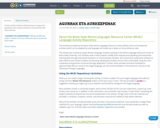
In this activity students will learn how to respond to greetings, how to greet and how to chat shortly with other persons.
- Subject:
- Arts and Humanities
- Languages
- Material Type:
- Activity/Lab
- Date Added:
- 02/25/2021

In this activity students will learn how to respond to greetings, how to greet and how to chat shortly with other persons.

Students will work in a small group to discuss a variety of topics through the lens of comparing different countries. These discussions will be facilitated through a board game, and ASL vocabulary will be embedded.
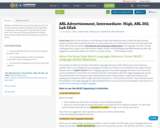
Students will talk about news and how they access it. In the main activity, students will make an ad supporting or opposing a certain product, they will have to make their case to the rest of the group.Students will learn how to discuss items and express opinions on items to a group.

Students will practice conversing with each other and answering basic questions about themselves.

In this activity, students will talk about their summer. They will also introduce themselves and get to know the rest of their lab/group mates. Students will finish the lab by playing a speeddating game.
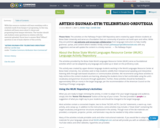
With this resource students will learn weekdays with a schedule made from basque tv programing. In this way, students will learn more about tv shows and programing from basque television. The teacher should ask students some questions in relation with the material uploaded.
Know how to answer Noiz? When? question is one of main objetive of this activity.
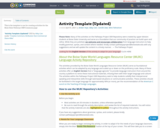
This is the template to use for creating activities for the Boise State Pathways OER Commons page
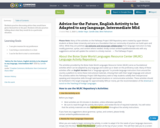
Students practice discussing advice they would have given themselves in the past. Students will also practice talking about what they would do in a particular situation.

The lab will start off with some conversation starters having to do with numbers, each prompt has a quantitative aspect involved. During the main activity lab students will get to learn each other's experiences in other countries, focusing on country similarities.
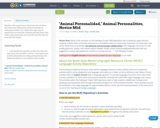
Students will use pictures to determine the emotions that others feel. Afterwards, students will take an animal personality test to determine what type of animal they are most like. Students will then share with others what animal they are most like and why they are most like that animal.

In this activity, students will practice answer the phone and having a conversation in Chinese, using mannerisms common in Chinese. They will practice trying to make plans with someone over the phone, explaining their schedule, and politely accepting or declining an invitation.

In this activity, students will practice answer the phone and having a conversation in a Chinese style. They will practice trying to make plans with someone over the phone, explaining their schedule, and politely accepting or declining an invitation.

In this activity, students will practice using the appropriate greeting based on the time of the day and who they are speaking to, and also will practice saying their names and asking about them.Can-Do Statements:I can greet and say goodbye to someone:In the morningIn the afternoon\evening\nightBefore bedtimeBased on who I am speaking with, I can use a culturally appropriate greeting.

In this activity, students will practice using the short vowels in a word. They will also practice how to write أ،ب،ت،ث in the first\middle\end of a word.Can-Do Statements:I can differentiate between the short vowels.I can pronounce short vowels with أ،ب ،ت ،ث I can use the short vowels in a word.I can recognize and write أ، ب، ت، ث، in the first\middle\end of the word.

In this activity, students will practice using the long vowels in a word. They will also practice how to write long vowels and how to read them as well.Can-Do Statements:I can understand the long vowels in Arabic.I can differentiate between long vowels and short vowels.I can write and read long vowels in Arabic.

In this activity, students will practice talking about themself in four simple sentences. As well as reading new simple conversation sentences.Can-Do Statements:I can introduce myself to others.I can say:My nameMy age My nationalityMy majorI can ask others about their names, ages, majors, and nationalities.

Description:In this activity, students will practice reading and writing numbers from 1-10 with simple math problems, as well as how to use and say +. -, = in Arabic.Can-Do Statements:I can read\write numbers from 1 to 10 in Arabic.I can use simple math symbols like +, -, and = in Arabic.I can exchange my number with others in Arabic.

In this activity, students will practice reading and writing numbers from 1-10 with simple math problems.Can-Do Statements:I can read\write numbers from 1 to 10 in Arabic.I can use simple math problems like +, -, and = in Arabic.I can exchange my number with others in Arabic.

This activity will have different and fun instructions using a tool called Jamboard. Students will write, pronounce, and memorize the opposites in Arabic. Can-Do Statements:I can use opposites in a conversation with a friend.I can find the opposite of the image provided to me.I can type/draw an opposite word in Arabic.

In this activity, students will practice reading and writing colors in Arabic with a fun game! As well as practicing using the color with feminine and masculine forms. Can-Do Statements:I can read/write colors in Arabic.I can recognize that colors have feminine and masculine forms in Arabic.I can use colors with feminine and masculine forms.